Why Is Food Safety Important In Healthcare? Healthcare Leaders Guide
Learn challenges healthcare foodservice teams face today and key food safety practices to protect vulnerable patients. Get a free healthcare leader...
Although a common household belief, food safety agencies actually advise against washing meat before cooking.
Proper handling of meat is an essential practice in the food industry. Fresh, raw meat contains very high moisture levels and is very prone to contamination by bacteria and other pathogens.
In fact, meat naturally contains biological hazards that can be reduced through processing. That's why today we're answering the question: Is washing meat necessary before cooking?
Key takeaways
Washing any type of meat before cooking is highly discouraged by food safety agencies. Before reaching other food businesses, inspected meat and raw poultry products prepared in manufacturing companies are already cleaned, so there is no need to further wash them.
Food safety agencies, such as the U.S. Department of Agriculture (USDA), reported that washing meats before cooking can increase the risk of cross-contamination in the kitchen. In this context, washing with plain tap water or with soaps and detergents is highly discouraged.
In a study conducted by the USDA, the agency found that at least 26% of food handlers in their study spread bacteria from washing raw poultry meat into their salad lettuce and other fresh ingredients.
Washing meat before cooking or for any food preparation is not necessary. This operation increases the risk of spreading harmful pathogens from the water droplets as you wash the fresh meat. Because there is no immediate way to detect food pathogens just by a look, the risk of causing foodborne illnesses after washing meat is significantly increased. Food safety specialists advise avoiding washing meat before using it.
Meat products are very prone to contamination and normally contain food microorganisms that can cause spoilage or food illnesses. Despite this fact, the present microorganisms are easily controlled with proper handling and cooking of foods.
Common bacterial pathogens and other microorganisms can be eliminated using methods, such as frying, baking, or roasting. The important thing to remember is that the cooking process must be precise and the target internal temperature must be achieved to ensure that pathogenic microorganisms are eliminated. To do this, use a properly calibrated meat thermometer when cooking meat.
To always be sure about the right internal temperature your food should achieve through cooking, we have made a free food safety template hub with thorough instructions for cooking food safely.
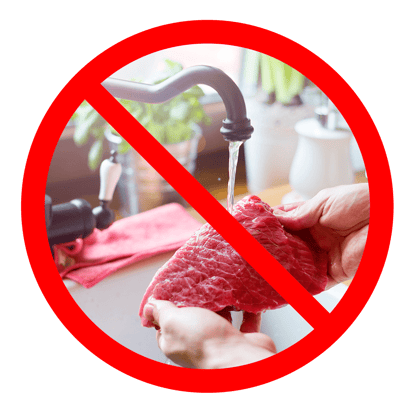
In the earlier days, communities wash meat and meat products to remove foreign materials, such as slime, dirt, and even blood, as a cultural practice. This was a common practice in communities that slaughtered their food. Washing meat in hot water was a common method before to prevent fast food spoilage and to make the meats presentable when being sold.
To date, food hygiene regulations do not recommend washing meat before cooking, especially for manufacturers, retailers, and food service businesses. Washing meat has been proven to increase the risk of spreading pathogenic bacteria in a food facility.
Because of the very small characteristics of foodborne pathogens, they can easily be transported through droplets of water. Spreading contaminated water can also contaminate other food contact surfaces, tools, and other food ingredients.
Washing any type of meat is an optional process that is highly discouraged by health agencies, especially for food businesses. If in case washing meat has always been a practice in your food business, strict extra measures must be taken to protect your food items and consumers.
Regular and correct cleaning and sanitation procedures must be done between preparing meat and cooking. The sequence of washing fresh produce would also affect the risk of spreading cross-contamination. If you are washing meat before cooking, make sure that you have a dedicated sink for washing other ingredients.
In addition, soaps and sanitizers, such as liquid chlorine bleach, should never be used to wash your meat and poultry products. Washing meat with soap or sanitizers will only contaminate the food with chemical hazards.
Chicken and other raw poultry meats, such as ducks, are not advised to be washed before cooking or freezing. Poultry meat has been connected with several cases of food poisoning from Salmonella. Washing the chicken meat can increase the risk of spreading the potentially present pathogen to the adjacent food contact surfaces and products through poultry juices.
Suppliers of dressed chicken and poultry apply specific controls to maintain the safety of the food products. At the kitchen level, the best way to reduce the risk of causing foodborne illness is to cook poultry meat to the correct internal temperature.
All forms of chicken, either ground or whole, as well as other poultry meats, are recommended to be cooked to an internal temperature of 74°C (165°C). Below this safe temperature, the risk of allowing pathogenic microorganisms to survive becomes very high.
Check out our free chicken cooking temperature chart.
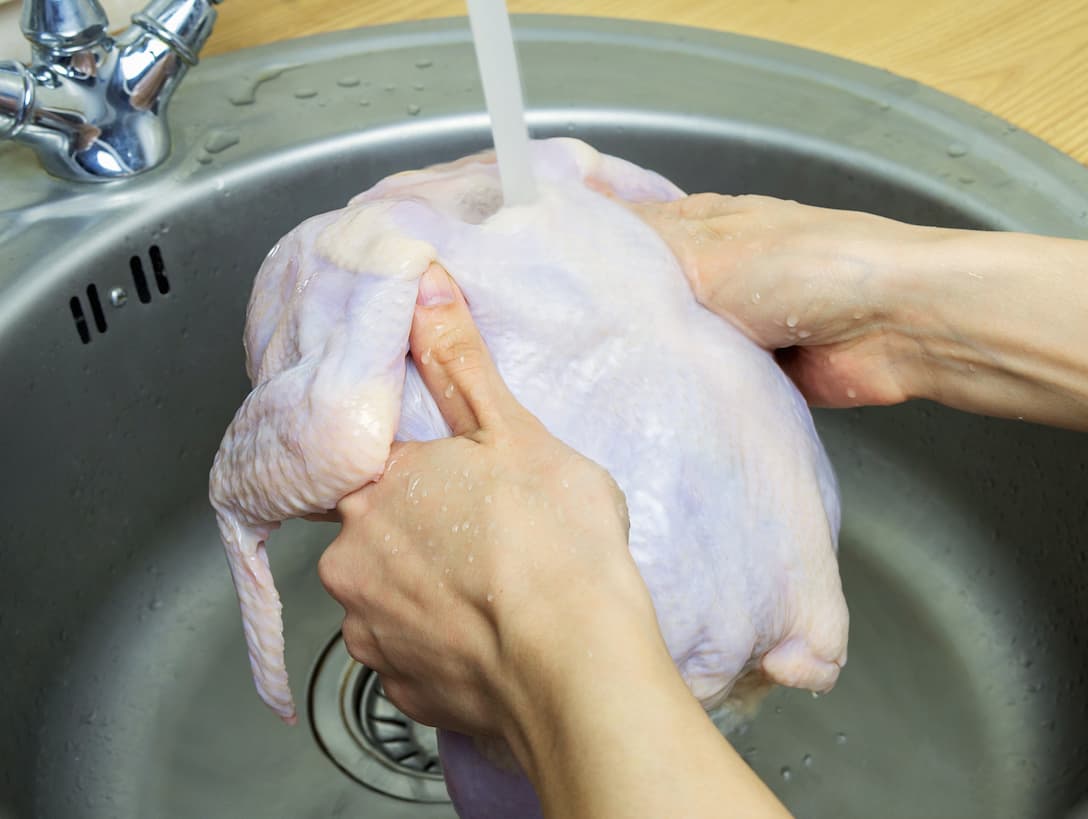
Similar to other forms of meat, it is not advised to wash ground meat before cooking. The reason behind this advisory is concerned with both food safety and quality.
Ground meat is known to be more likely to get contaminated during processing when compared with whole cuts of meat. More surface area of the product is exposed because of the grinding process and different cuts of meat are combined.
Washing ground meat can spread contamination due to the dripping of blood and water. In terms of quality, washing ground meat removes both the blood and fats of the product.
Hamburger meat is a mixture of ground meat and seasonings. Washing hamburger meat can affect its shape and quality.
It is not recommended to wash hamburger meat. Some food handlers blot the patties with towels to reduce the blood dripping and moisture of the product. If this is a practice that you do in your restaurant, the kitchen towels must be immediately disposed of away from the preparation area.
Cooking burger patties require an approximate internal temperature of 71°C (160°F) to ensure food safety. Lower internal temperatures may be used in combination with strict food handling to achieve different levels of doneness.
Find a free cooking chart template for burgers.
Rinsing deer meat or venison before cooking is not recommended by food safety agencies. Like other meats, washing venison can spread contamination in a kitchen.
This type of meat is rich in blood and therefore can drip all over the preparation area. Blood drippings and water splashes can carry pathogens.
An internal temperature of 74°C (165°F) is recommended for food safety.
Find a free cooking chart for version meat from here.
Steaks are often sold already cleaned and prepared for food businesses. As such, there is no need to wash any cut of steak before cooking.
Some food handlers soak steaks in a solution of organic acid and lemon juice or salt, but this process does not have anything to do with food safety. When soaking steaks, food handlers must always remember to dispose of the soaking solution properly.
Harmful bacteria and other pathogens may leach into the soaking water, which can contaminate the kitchen sink.
When preparing your steak, always ensure a proper cooking temperature to achieve the required internal temperature of your steak. If your food business allows serving undercooked steaks, make sure that you provide a consumer advisory and that your team always practices strict food handling.
Check out our free steak cooking chart.
Washing meat is not only a health risk, but it can also reduce the quality and nutritive aspects of foods. Studies have shown that washing meat can reduce its protein content significantly. A majority of the flavor profiles in meat are caused by the interaction of proteins and other macronutrients in the food.
In addition, washing can also remove a significant amount of fat from the meat, affecting its flavor and texture.
In general, washing meat before cooking is not a common practice for chefs in the food industry. As mentioned, washing any kind of meat does not only negatively affect the flavor of meat, but it also increases the risk of cross-contamination in a kitchen.
Rinsing in some food businesses may be done as part of a preparation process for marination or other treatments. Some food businesses also soak the meat in salt water. When washing meat, extra precautions must be always practiced. All other fresh produce must be separately prepared.
Safe food-handling practices of raw foods and food hygiene are important food safety operations. Raw foods are considered high-risk or perishable foods, and therefore are prone to food contamination.
The way food handlers prepare raw foods can significantly contribute to minimizing the risk of causing cross-contamination and the chance of food poisoning.
To help you minimize the risk of cross-contamination in your kitchen, follow these food safety tips:
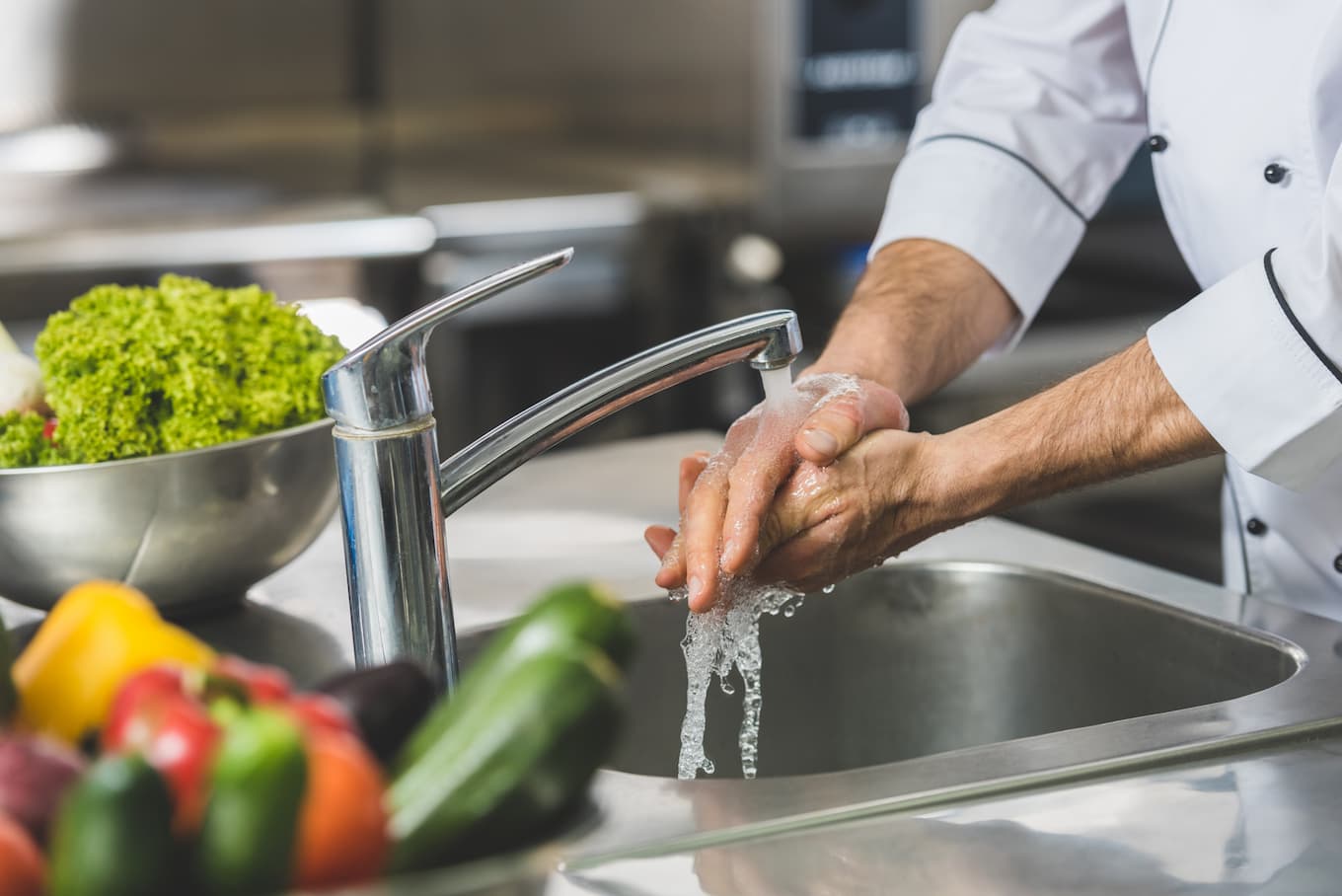
Simple food safety guidelines can go a very long way when it comes to preventing contamination from handling meat. If done correctly, the risk of contaminating your whole facility becomes significantly lower.
The key to ensuring safe operations is to monitor them consistently. You can do this by using a comprehensive food safety management system.
Use FoodDocs' intuitive digital solution for monitoring your entire working process. Our digital Food Safety Management System can provide smart solutions and help your team maintain food safety compliance more easily.
With our smart food safety software, you can get the following benefits:

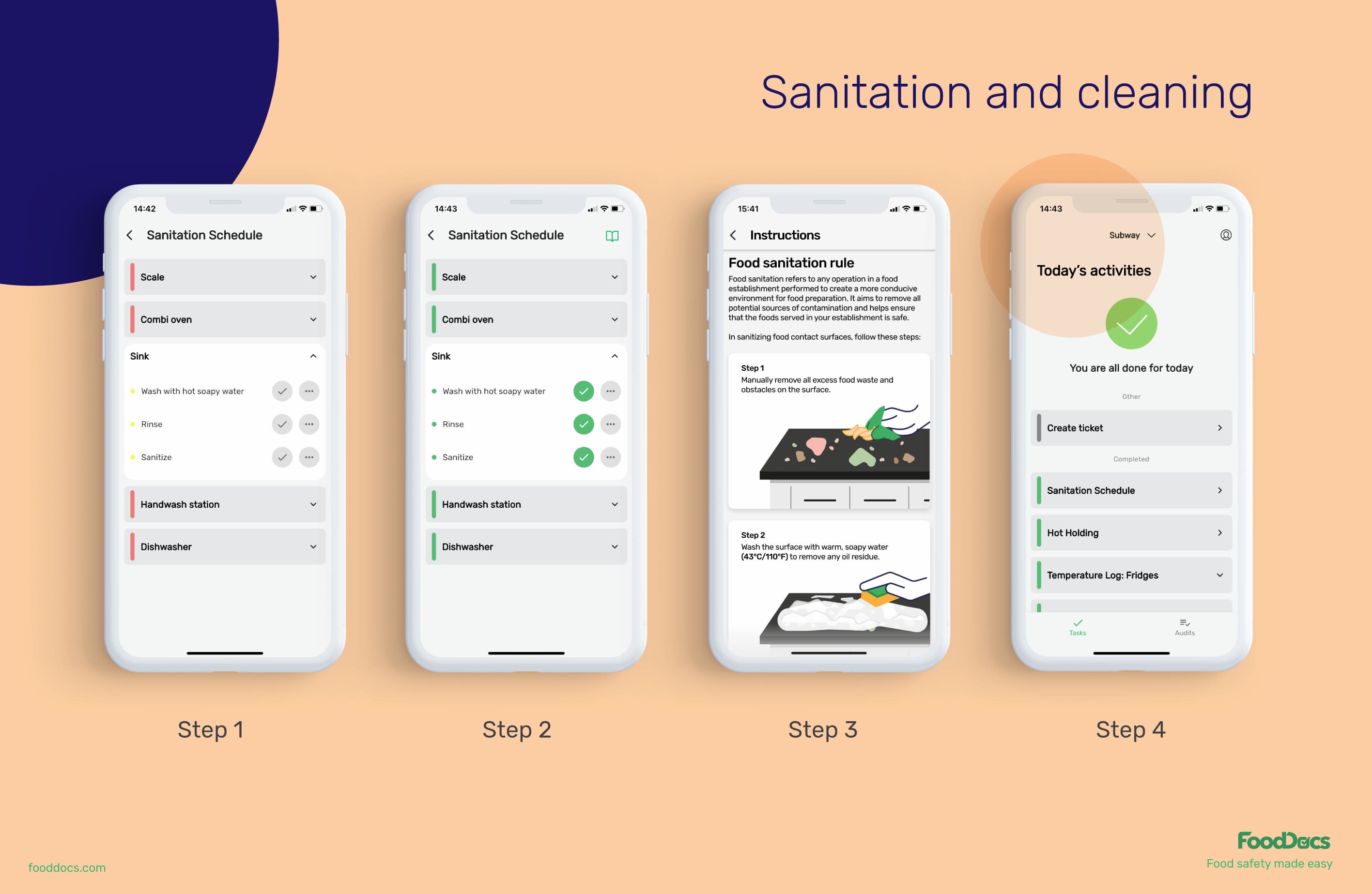
In addition to features that can help food handlers, our digital Food Safety Management System can also help managers improve management efficiency through the following features:
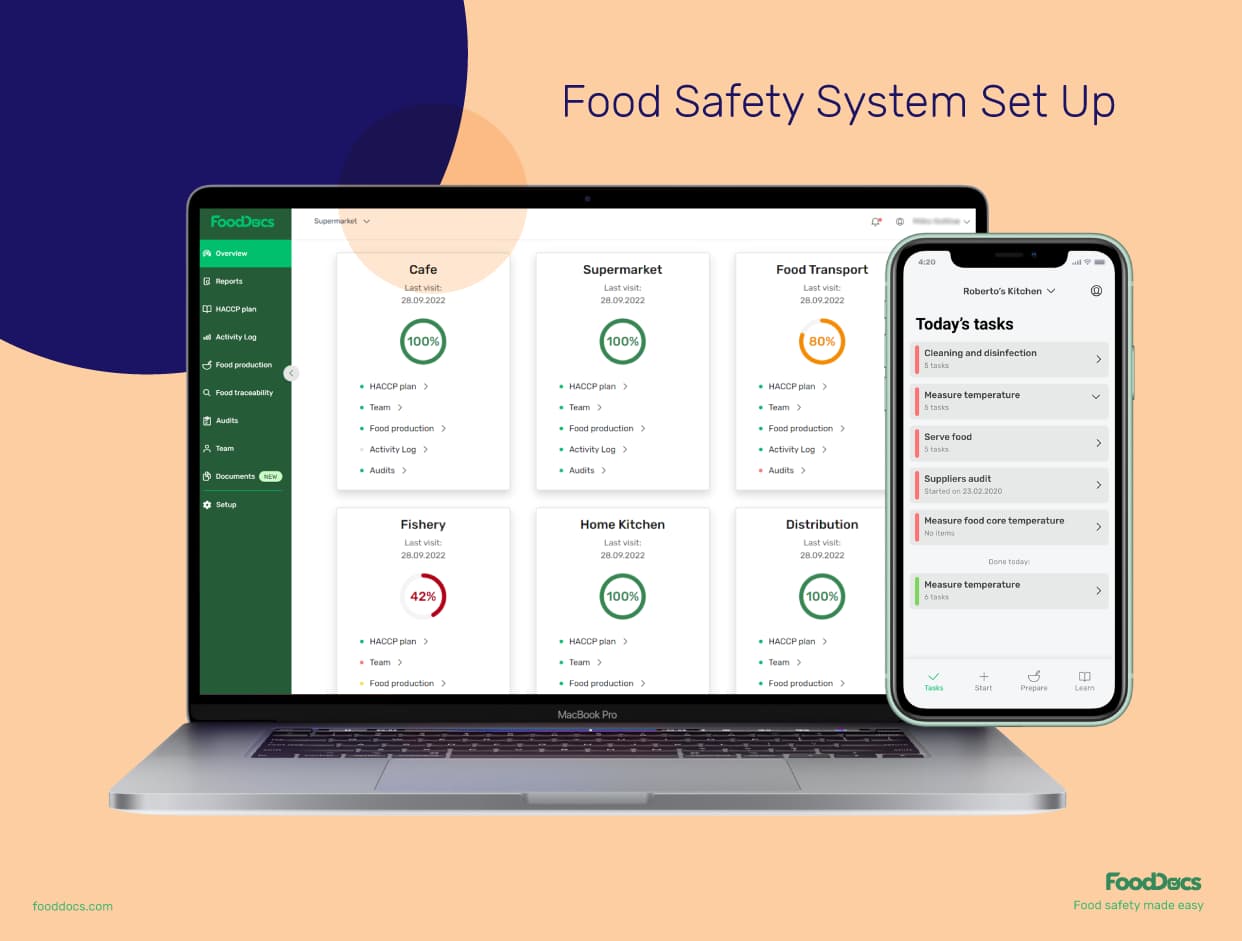
Our digital solution can help you maintain compliance, and all it takes is for you to set up your digital food safety management system now. The whole process would only require 15 minutes of your time and you can start monitoring digitally right away.
Our system uses artificial intelligence and a machine-learning program to generate all the essential food safety documents for you. The generated suggestions and documents are based on the closest operations of businesses with the same profile as yours. Our system only gets smarter with time.
You can also customize all digital monitoring logs and checklists or make your own digital logs to help fit the system precisely to your needs.
FoodDocs' digital Food Safety Management System was made to make food safety compliance more accessible for all food businesses.
Start using our digital platform for your compliance requirements now. You can experience our services using our free 14-day trial.
Do you have more questions regarding this topic? We compiled some of the most frequently asked questions about washing meat to help you.
All health and food agencies in the U.S. advise against washing meat before cooking or storage. A study conducted by the USDA revealed that washing meat increases the risk of cross-contamination on the kitchen surface.
The short answer is, yes, it is bad. Washing meat can cause negative results for your food business. The operation can spread pathogenic microorganisms throughout your kitchen through tiny water droplets that may carry food pathogens. The meat-washing liquid may also get into the other parts of your kitchen.
Skip washing chicken meat before cooking. Washing chicken meat in the sink can contaminate other food products on the preparation table, as well as the kitchen surface. If you use kitchen towels to dry or remove dirt on the chicken meat, immediately dispose of the towels properly.
Meat processors normally clean the meat they supply before delivery, so there is no need to further wash raw meat before cooking. Any remaining dangerous bacteria can be removed with proper cooking methods.
The most effective way to remove bacteria from raw meat is to cook the raw ingredient to the recommended internal temperature. This operation will ensure that the product is equally exposed to the required amount of heat to make it safe for consumption.
Washing ground beef is not advisable for both safety and quality reasons. When you wash ground beef or any meat, you risk losing fats, flavors, and proteins from the meat. These components can be washed with water. This water can also contain bacteria that may spread in the kitchen through droplets.
No. Washing steak before cooking removes a lot of the natural juices from the cut of meat. This process removes several flavor compounds from the steak and can even promote contamination of the kitchen.
As advised by health and food safety agencies in America, meats should not be washed before cooking. Washing any type of meat can spread pathogens in the kitchen through the water droplets during the process.
Learn challenges healthcare foodservice teams face today and key food safety practices to protect vulnerable patients. Get a free healthcare leader...
Learn what Standard Operating Procedures (SOPs) are and how to write effective SOPs that ensure consistency, efficiency, and safety in your...
Boost your retail food safety with essential practices and digital tools to protect customers and your brand. Plus a free Retail Food Safety Leader...